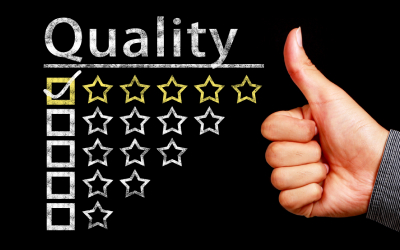It is interesting to consider cross-selling to businesses and consumers. It makes sense to try, with the cost of acquiring a new customer being many times greater than the cost of retaining and growing an existing one. Targeted direct cross-selling of relevant B2B and B2C products and services to customers whose needs cross the border between the two can be surprisingly profitable.
Sell To Your Prospects Where They Live…And Work
B2B and B2C are not hardened silos. A campaign that employs cross-selling to businesses and consumers identifies products and services a direct seller has to offer that may appeal to each, or both. Like two sides of the same coin.
Successfully crossing that border requires knowing who the customer is. It requires recognizing when the needs, attitudes and behaviors that arise in each customer’s home and work life represent ripe opportunities. B2B and B2C almost fuse into a B2ME hybrid. Relevant and personalized. So who are these people?
One thought that comes to mind is the busy executive who takes work home. The rationale is more than just being over-worked. It includes the conscious decision to escape from the distractions of the workplace to continue in an atmosphere of relative calm. A marketing offer that resonates may get more attention. There are mailing lists to reach them.
Another is the millions of small and home-based businesses that are being constantly created. For these entrepereneurs, the environment may not change per se, but the mindset certainly does as they switch back and forth between personal and professional mode. For them the logic of a cross-border offer may be more immediately apparent. There are mailing lists to reach them.
This Approach Is Already Succeeding
There are a number of examples of cross-audience direct selling. Financial & legal services, insurance, travel, and hospitality are just a few. Each enjoys a robust B2C and B2B user base. Each has products and services that are of interest to both. As such they have an advantage when cross-selling (each of these examples is a two way street):
- The home & auto insurance customer can be cross-sold a malpractice policy
- The business banking customer can be cross-sold a home mortgage
- The business debit cardholder is cross-sold a personal card account
- The frequent business flyer can be cross-sold a vacation package
- The same traveler can parlay hotel points into a resort stay with the family
- The SUV buyer can be cross-sold delivery vans
These are just a few examples of how existing business and/or consumer relationships can be grown through opportunistic targeting. Making the most of these opportunities means marketers need to do a few things well:
- Gather accurate data from their interactions with customers past and present
- Embrace to fact that barriers separating the workplace from home are blurring
- Accurately assess the true relevance of your cross border opportunities
- Build profiles describing “look-alike” prospects for future relationships
- Combine house-file and look-alike profiles to expand your prospect list
- Identify 3rd party data resource to analyze and select effective mailing lists
Contact data supporting an effective cross-border campaign will reach small and home-based prospects where they live/work. It will connect with executives who devote time away from the office to work at home. If you need to grow your list beyond your house file, consider business data from a top-tier source such as Dun & Bradstreet, as well as fresh, accurate consumer data.
When the T’s are crossed and the I’s are dotted, it’s safe to say the response to a well-built cross-border campaign can equal or even exceed that of your siloed Business to Business and Business to Consumer efforts.




